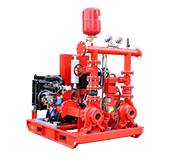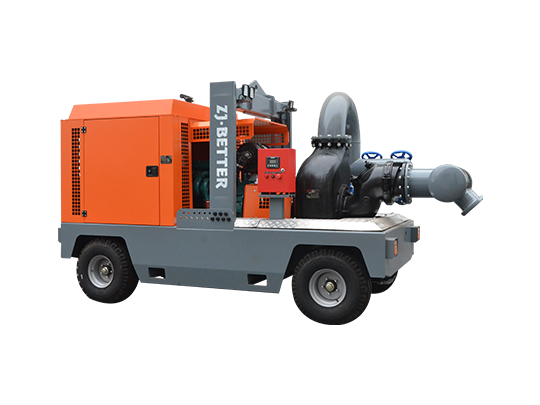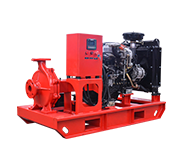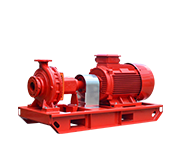Take a trial movement after the pump is installed to check the moving direction of it and remove the defect in the installation.
2. Sequence of trial:
(1) Close the outlet gate valve or check valve.
(2) Fill leading water: first start the pump and fill water into it through the screw hole on the top of it or open the check valve to let the water in the water-out pool back primed in; or directly use a vacuum pump to lead water by means of exhausting (when the vacuum pump exhausts the air inside of the pump completely and gets water out, start the pump and stop the vacuum pump).
(3) When the mover reaches the normal speed, open the gate valve fully and adjust the packing tightness. Have the pump go on moving in case of a normal movement and bearing temp>erature and a slight vibration (when the check valve is used, lift the bonnet when water goes out so as to reduce resistance).

(1) When the bearing uses thin oil for lubricating, often check and control the oil level with the bearing body in between two marking lines on the oil leveler rod; and when it uses dry oil (lubricating grease), supplement a proper amount of oil in a period ic time by means of removing both front and rear covers for model 150〜350HW pump and the oil cup for model 400〜800HW pump.
(2) Often check the bearing's temperature rise, which should not be over the ambient one by 35°C generally and by 75^0 to the utmost extent.
(3) Pay attention to both frictional and collided sounds which may occur during the pump movement. In case of friction between both pump cover and impeller, add paper pad in between both pump cover and casing. The applicable interval in the actual use is 0.3〜0.7mm.
(4) Adjust the packing properly to have the liquid intermittently leak in drops from the packing gland. Too tight packing will cause the shaft heated and the power increased while too loose will cause excessive liquid leak and a lowered efficiency.
(5) In case of direct link between both pump and motor, have the axial lines of both on a same straight line.
(6) Check if there is air which leaks from the water-in pipeline.

(8) Often check if the bolts get loose due to vibration.
(9) Drain out the water remained in both pump and pipeline after stop in case of winter.
(10) Replace the lubricating oil or grease after 3000h work of the pump or in half a year and then once every lOOOh or every year.






